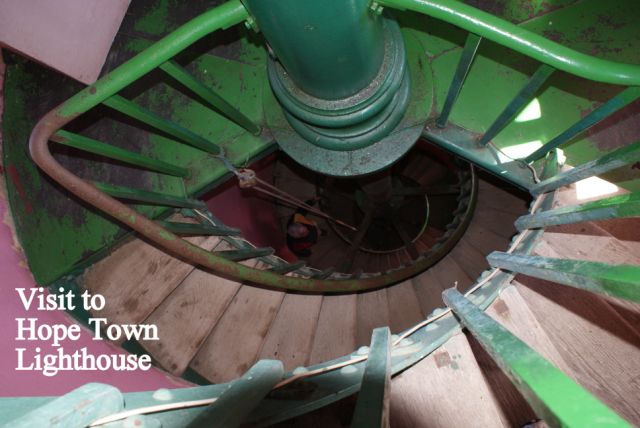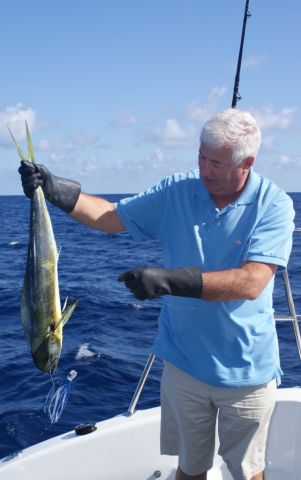So much of the Bahamas
is just is as it has always been – hundreds of low-lying islands, topped
with vegetation and edged by white beaches. Defining
the boundaries of this commonwealth of gems is the meeting of the seemingly
fathomless, deep-blue Atlantic Ocean and the
dazzling turquoise waters of the shallows within the archipelago. Crossing the
line between the two can be very abrupt – taking just a minute to go from
a depth of 500 metres to 5, the
transition often causing strong currents. Once within the islands the water is
so clear that you can navigate by the colour of the
water and the seabed - deep blue is safe; aquamarine is probably alright, but
use caution; white is definitely too shallow; brown is coral and dangerous.
Even so, the nerves are tested when the depth sounder goes to 0.2m under the
keels, 0.1m, 0.0m…..!
Spread over 350 miles, the islands are grouped with the Grand Bahamas
and Abacos in the north, then dropping south to the Berry Islands
and the Exumas. In the east Eleuthera, Cat
Island, Long Island, Little San
Salvador, Crooked Island and Long Cay form the Far Bahamas, with Andros Island
to the west, although this is not a destination for yachties. Most islands are
long and narrow. For example, Eleuthera is 110 miles long, 4 miles across
its widest point, with just a bridge linking the neck of the island and forming
the division between ocean and shallows.
Since leaving the pretty town of Little Harbour on Great Abaco Island,
we have visited Harbour Island, Eleuthera, (apparently where the
‘beautiful people’ go), passed through a very sleepy Spanish Wells
(it was New Year) and called in to the bustling town of Governor’s
Harbour on Eleuthera, where we managed to not only post some letters, but buy
both bread and gear box oil. For the rest of the time we have been either
the only yacht in the bay or in the company of just one of two others. I
don’t know whether there are fewer cruising people than I expected or
there are just far more islands (cays) to visit than I realised. Either way, we had a very special time when friends
joined us at the New Year anchored in a secluded bay which had a fine, sandy
beach.
Although we were the only people at the restaurant, we have just had a
good lunch of conch fritters and lobster, sat in the sunshine overlooking the
tiny harbour of Little Farmers Cay. Since arriving
in the Bahamas
on the 19th December we
have eaten ashore only once, not because our culinary skills are so great that
we have no rivals, but because there just are no restaurants in the places we
have explored.
Lack of provisions is not a problem as we have excellent stocks on
board, but it is a very good job that we haven’t been relying on our
fishing skills. We have sought advice, bought extra lures and an Hawaiian
sling (sort of spear gun), tried fishing at different times of the day and read
some of ‘The Cruisers’ Handbook of Fishing’…. all to no
avail until, that is, two days ago when John reeled in a Mahi-Mahi: Great
excitement and three delicious meals! He is now inspired.
I haven’t yet worked out how the economy stacks up in the Bahamas.
It seems that many enterprises have come and gone, and the global recession has
bitten deep here. Privateering and piracy were hugely profitable in the late
1600s and 1700s. The Bahamas
thrived during the American Civil War as a haven to Confederate
blockade-runners. In the mid 1800s the sponge industry started when a
shipwrecked Frenchman exported the first sponges to Paris. 1917 saw the Bahamian industry peak
with over 1m pounds of sponges exported – over a quarter of the
world’s output. It involved over 600 schooners and sloops and 6000 local
fishermen. However, the concern of overfishing became academic when in the last
two months of 1938 a fungal disease wiped out 99% of the sponges. Prohibition
in the States greatly boosted the economy between 1919 and 1933: Nassau boomed with hotels,
bars and gambling. The 1950s saw a tourist property boom, but economic success
of the 60s and 70s was tainted with the spoils of drug-trafficking. Since
then? Well, the economy can still rely on warm winter weather,
crystal-clear turquoise waters and sports fishing to attract the tourists and
cruising yachties. The locals may not have much money, but they seem to take
pride in their homes and welcome you to their community with a warm smile.







